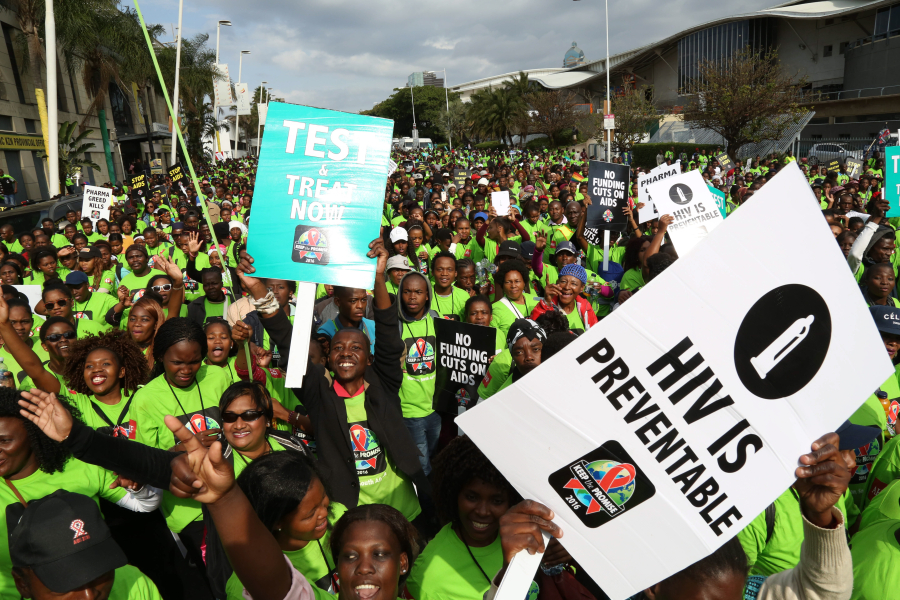Not many years ago, the idea of defeating the resilient virus that causes AIDS was far-fetched. But as 18,000 people gather this coming week in Durban, South Africa, for the 21st International AIDS Conference, the prospect of a cure is plausible enough that it is attracting increasing amounts of money, scientific research and attention.
Discussion of a cure will lead off the conference, which comes little more than a month after the United Nations committed to action to end the AIDS epidemic by 2030, despite formidable obstacles. Leaders of the global battle against HIV have described 2016 as a pivotal year in their effort.
“Achieving such a cure is one of the great scientific challenges ever undertaken,” Françoise Barré-Sinoussi, one of the discoverers of the virus, told reporters in a news briefing. “Our challenge is to take the science forward.”
Worldwide funding for research on a cure rose to $201.8 million in 2015, up 25 percent over the previous year and more than double the $88.1 million spent in 2012, two years after the International AIDS Society launched a program to achieve a cure. The vast majority of the money comes from governments around the world. On Wednesday, the National Institutes of Health awarded $30 million annually for the next five years to six U.S. research centers working toward a cure.
Also scheduled for this fall is a large-scale clinical trial of an HIV vaccine, which will be conducted in South Africa and co-funded by NIH.
“The two greatest challenges remaining in HIV/AIDS research are finding a cure and developing a safe and effective preventive vaccine,” said Anthony S. Fauci, director of the National Institute of Allergy and Infectious Diseases, which is leading the vaccine trial.
Research scheduled to be presented at the AIDS conference includes several strategies for a cure, including gene editing and stem-cell therapy. The positive long-term impact of antiretroviral therapy also will be discussed.
Transplanting stem cells from a donor known to be immune to HIV is expensive and risky. This technique was used on a patient who was being treated for acute myeloid leukemia and is not practical for other people. But it did produce the one recognized cure in the history of the disease, according to a preview of the International AIDS Society’s updated scientific strategy for a cure, which was published online Monday in the journal Nature Medicine.
The hurdles to a cure include the adaptability and persistence of the virus. It took decades to turn HIV from a death sentence into a chronic, manageable disease through antiretroviral therapy, and few are willing to predict when a cure might be feasible. The suppressed virus can lay dormant for years but may reemerge and cause infection if medication is halted.
“There are now a number of potential therapeutic strategies that could conceivably achieve this goal, once considered aspirational,” researchers, including Barr?-Sinoussi, wrote in the Nature Medicine article. “The challenges, however, remain substantial.”
Some believe that sustained remission – the suppression of the virus to almost undetectable levels for a long period – may be a more realistic goal.
Also, financial support for anti-HIV activity fell in low- and middle-income countries for the first time in five years, according to a new report by the Kaiser Family Foundation and UNAIDS.
The effort to spread access to current therapies remains a central focus of public health experts, policymakers and people with HIV. About 17 million people worldwide had access to antiretroviral drugs in 2015, a sharp rise from 7.5 million five years earlier. About 2 million people worldwide started on therapy last year, almost as many as the 2.1 million who were newly infected.
But 1.1 million people died of AIDS in 2015, and 22 million were not receiving treatment, according to the U.N. About 36.7 million are living with the virus. Roughly two-thirds of new infections occurred in sub-Saharan Africa.
By 2020, the U.N.’s 90-90-90 strategy calls for 90 percent of all people with HIV to know their status, 90 percent of those diagnosed to be receiving sustained therapy and 90 percent of those under treatment to have suppressed the virus.
The conference will highlight the importance of expanded access to treatment to under-represented groups, including women and girls, men who have sex with men, transgender people, sex workers and people who use drugs.



